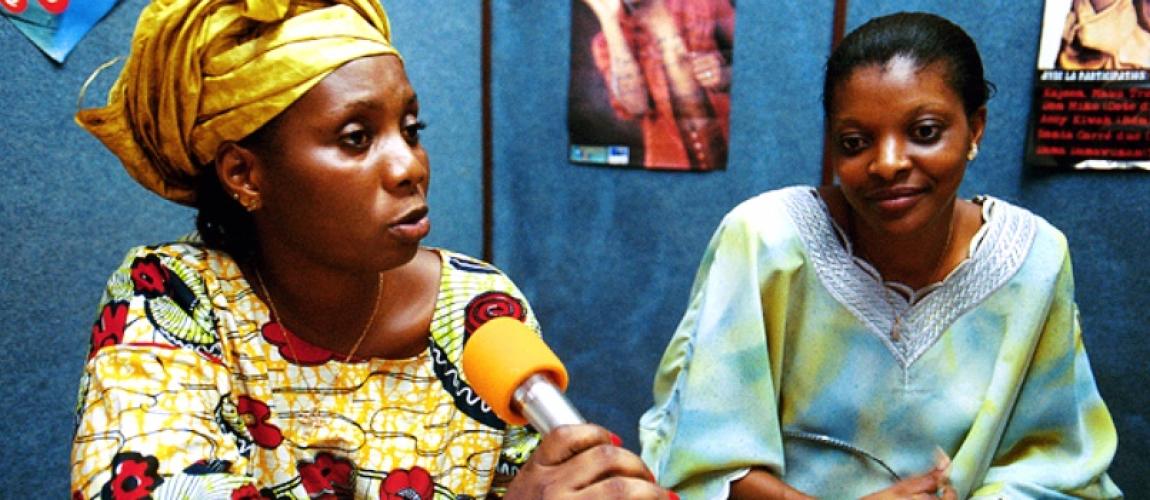Examining public-private partnership projects through a gender lens

Authored by: Susanne Foerster withVictoria Rigby Delmon
This article has also been cross-published on the World Bank's PPP blog. Click here to view .
The new section on 'Impacts of PPP on Gender Inclusion' is now available in draft form. Read more and give your feedback.
Investment in infrastructure services in emerging economies is key to tackling extreme poverty and enhancing shared prosperity. Achieving gender equality is equally important if we want to reach these goals and maintain social and economic milestones, long-term, as outlined in the World Bank Group Gender Strategy (FY16 – 23): Gender Equality, Poverty Reduction and Inclusive Growth. Public-private partnerships (PPPs) are an important tool governments can use to improve access to basic infrastructure services. A new resource on the World Bank Group’s Public-Private Partnership in Infrastructure Resource Center (PPPLRC) website—a comprehensive section on gender and PPPs—compiles guidance on how PPPs and infrastructure projects can be structured to enhance gender inclusion and ensure equal benefits and economic opportunities for women and men. Developed with the support of the Multilateral Investment Fund of the Inter-American Development Bank and PPIAF, this in-depth, wide-ranging resource strengthens the understanding of the challenges in this area and presents strategies on how to develop gender-smart PPP legal frameworks and contracts in developing countries. Read more Evidence from a large body of literature suggests that it is unlikely that women and men, especially the poorest, benefit equally from new or enhanced infrastructure services. Neither do they achieve equal access to employment or other economic opportunities created by an infrastructure project unless a gender perspective is included in all stages of the project (Gender Impact of Public Private Partnerships – Literature Review Synthesis Report.) Men and women navigate different roles and responsibilities in their communities and families; they face different financial and legal constraints when participating in economic activities; and they have different needs regarding the location, design features, and fee structure of improved infrastructure services. For example, when using public transportation, women are more likely than men to make more but shorter trips with multiple stops at shops, markets, schools, health care providers, and childcare facilities. This results in women’s greater need for affordable fares, good lighting, and safe transport features. Applying a gender lens to a PPP project could mean listening to women’s and men’s views and taking potential gender-specific implications into account when PPP legal frameworks are developed and projects are designed, implemented, monitored, and evaluated. (See Gender Impact of Public Private Partnerships – Literature Review Synthesis Report.) To address the more general link between gender and infrastructure, a range of guidelines, practical tools, policies, and manuals have been developed by international organizations, national governments, and non-governmental organizations. Together, these materials provide some guidance on how a gender lens can be trained on infrastructure projects, whether across all infrastructure sectors, or specific sectors. Most of the materials were developed for traditional public works projects and are also applicable to privately financed infrastructure development and operations. However, little has been written about the connection between PPPs and gender impacts. The private sector has started to recognize that the business case for gender inclusion is strong and we have also seen some promising examples of governments including a gender perspective in their PPP legal frameworks to realize gender benefits throughout all project stages. See Investing in Women's Development: Good for Business, Good for Development. Here are some specific examples of how gender concerns could be addressed throughout the PPP legal framework and in PPP contracts, as outlined across the PPPLRC website: The new section on PPPs and gender inclusion on the PPPLRC website provides access to guidelines, tools, and publications on the topic, as well as links to laws and policies, guidance manuals, and publications that could be useful for the development of a gender-responsive PPP enabling environment and PPP contracts. The pages are divided by sector and highlight potential tools and considerations related to the structuring of a gender-responsive PPP legal framework. Those of us who have researched and developed this new section view it as an important first step in the development of gender-smart PPP projects and frameworks. With your input, we hope to improve and expand this section—especially with examples of gender-responsive policies, laws, and contracts and regulations. First-hand experiences relating how these are applied in practice are equally valuable. With the community’s expertise, PPPLRC’s newest resources on gender could have a practical, lasting impact and allow public and private sector partners in PPP projects to perform more efficiently and effectively. Please visit the Impacts of PPPs on Gender Inclusion for more information.Applying a gender lens throughout the PPP project cycle
Why is this true for something seemingly so “un-gendered” as an infrastructure project?
How can gender inclusion be strengthened in the PPP legal framework?
Disseminating and building on this information is key to progress
Updated: July 19, 2024
Related Content
Partner Resources

Women, Business and the Law 2024 is the tenth in a series of annual studies measuring the enabling environment for women’s economic opportunity in 190 economies. Women, Business and the Law 2024 introduces a new framework for measuring the implementation gap across three pillars: legal frameworks, measuring laws; supportive frameworks, measuring policy mechanisms to implement laws; expert opinions, shedding light on experts’ perception of women’s outcomes.